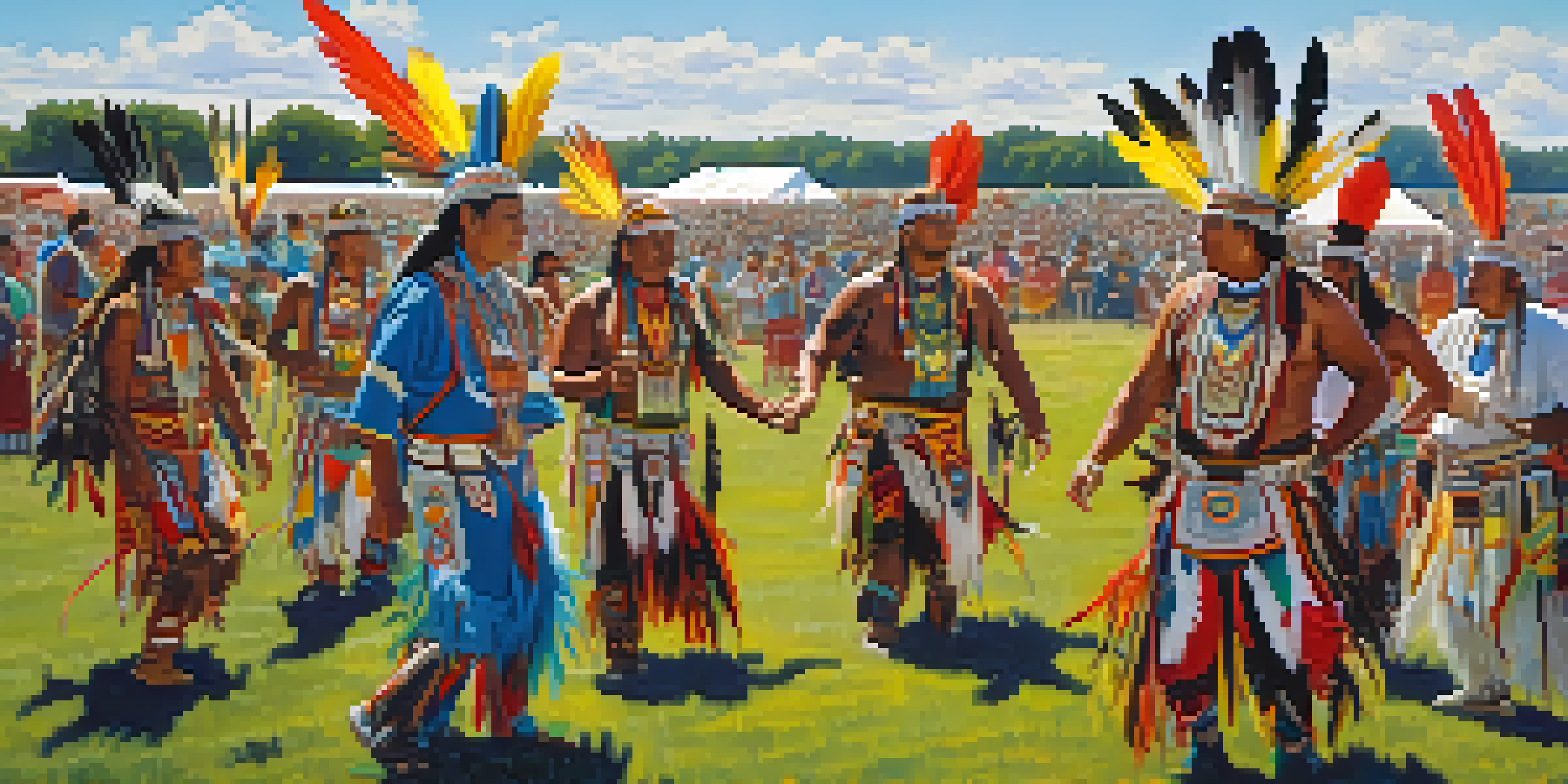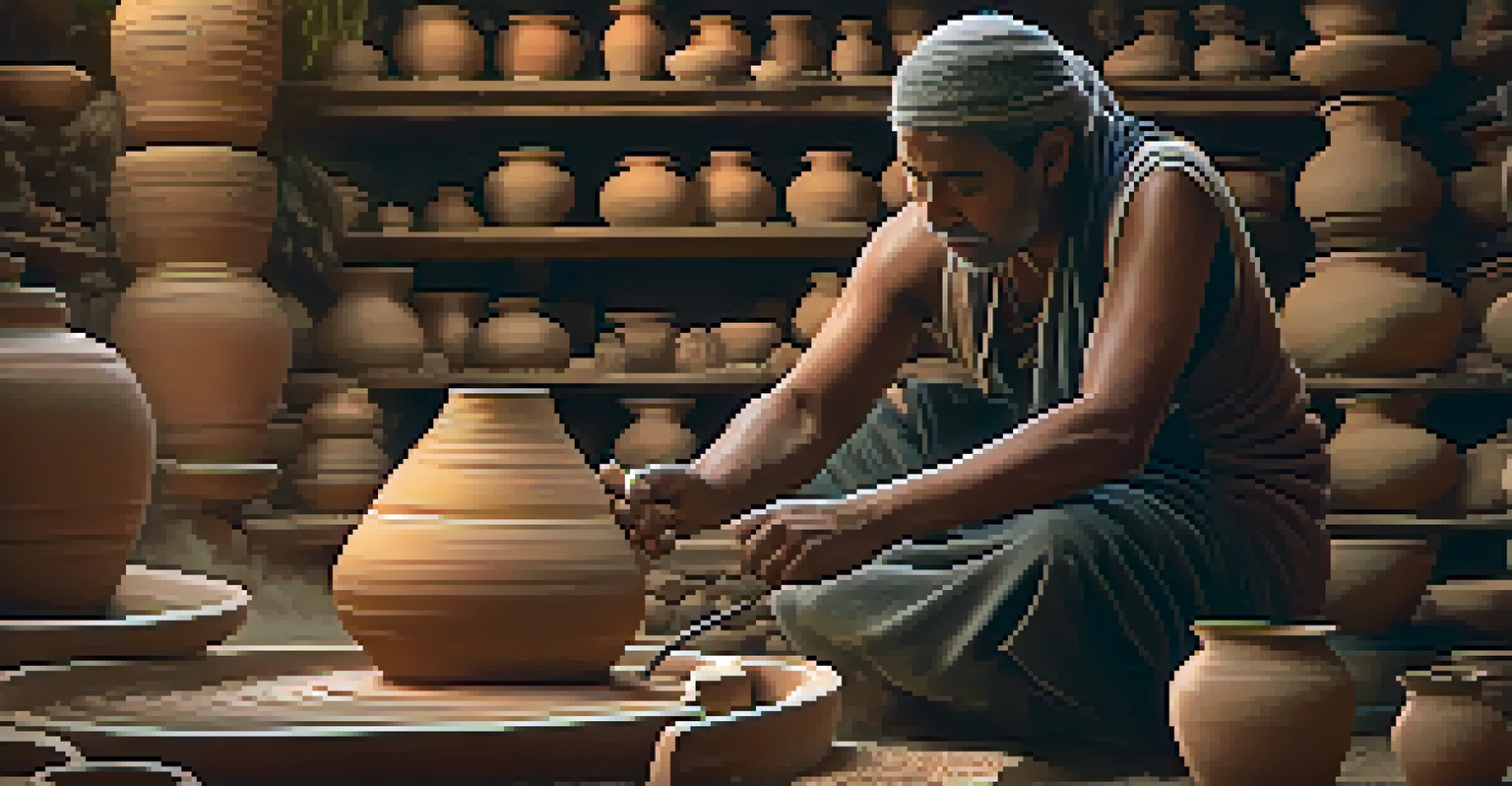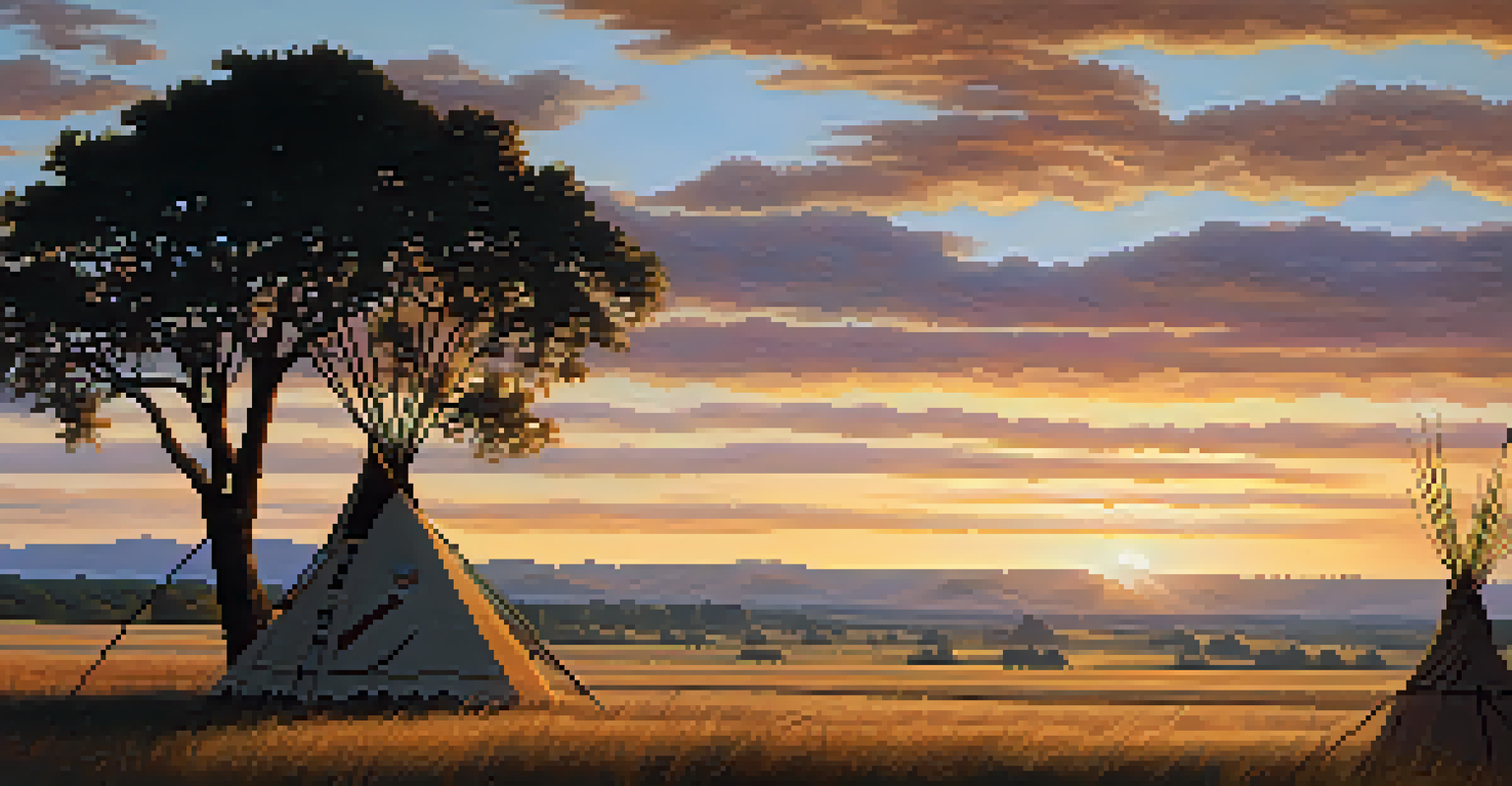Cultural Heritage of Kansas Native American Tribes

Overview of Kansas Native American Tribes
Kansas is home to several Native American tribes, each with unique cultures and histories. Prominent tribes include the Kansa, Osage, Pawnee, and Delaware, all of whom have contributed to the state's rich tapestry. Understanding these tribes is essential for appreciating Kansas's diverse cultural heritage.
We do not inherit the earth from our ancestors, we borrow it from our children.
These tribes historically inhabited the region, engaging in activities such as agriculture, hunting, and trade. Their relationships with the land and each other shaped their customs and traditions. Today, many of these tribes continue to thrive, preserving their heritage while navigating contemporary challenges.
By exploring their histories, we can gain insight into the profound connection these tribes have with their ancestral lands. This connection influences their cultural practices, storytelling, and community events, all of which are vital for maintaining their identities.
Traditional Arts and Crafts
The Native American tribes of Kansas are known for their vibrant arts and crafts, which often reflect their cultural narratives. Traditional crafts, such as beadwork, pottery, and weaving, are not just artistic expressions but also carry deep spiritual significance. Each piece often tells a story or commemorates a significant event in their history.

Beadwork, for instance, is a cherished art form that showcases intricate designs and patterns. These designs often incorporate symbols representing nature, spirituality, and tribal identity. Engaging in these crafts helps preserve traditions and pass them down through generations.
Rich Cultural Heritage of Tribes
Kansas Native American tribes possess diverse cultures and histories that are integral to the state's identity.
Moreover, these artistic endeavors play a role in community bonding and cultural education. Craft gatherings and workshops allow younger generations to learn from elders, ensuring that skills and stories are not lost. This continuity enriches the cultural fabric of Kansas, making it a vibrant place to explore.
Language and Oral Traditions
Language is a crucial element of cultural heritage, and many Kansas tribes have their own languages steeped in history. The preservation of these languages is vital for maintaining cultural identity and passing down stories. Oral traditions, including storytelling and songs, serve as a means of sharing wisdom and values across generations.
The more you know about your history, the more you are empowered to create your future.
For instance, stories about the creation of the world or lessons from nature are often shared during community gatherings. These narratives not only entertain but also educate younger members about their heritage and moral values. Language plays a key role in these stories, making their preservation essential.
Efforts are underway to revitalize native languages through educational programs and community initiatives. These endeavors highlight the importance of language as a living aspect of culture that evolves while still honoring its roots. This revitalization is crucial for the identity and future of Kansas Native American tribes.
Spiritual Practices and Beliefs
Spirituality is deeply woven into the lives of Kansas Native American tribes, influencing their customs and community activities. Traditional beliefs often revolve around a profound respect for nature and the interconnectedness of all living things. Ceremonies, rituals, and festivals are vital for expressing their spirituality and cultural identity.
For example, the Sun Dance is a significant ceremony among some tribes, symbolizing renewal and community strength. During this event, participants engage in fasting, dancing, and offering prayers, connecting deeply with their spirituality and each other. Such practices reinforce community bonds and cultural values.
Importance of Language and Arts
Traditional arts, crafts, and languages are vital for preserving cultural narratives and fostering community bonds among tribes.
Moreover, spirituality also plays a role in healing practices, where traditional medicine and modern approaches intersect. Elders often serve as spiritual guides, offering wisdom and support to their communities. This holistic approach to health and spirituality underscores the importance of cultural traditions in everyday life.
Historical Impact and Resilience
The history of Kansas Native American tribes is marked by resilience in the face of adversity. Colonization, forced removals, and assimilation policies have challenged their communities, yet many have adapted and survived. Understanding this history reveals the strength and perseverance of these tribes.
For instance, the signing of treaties often led to loss of land and resources, but tribes like the Osage and Kansa have worked tirelessly to reclaim their rights and maintain their sovereignty. Their resilience is evident in their ongoing efforts to revitalize languages, traditions, and governance.
Today, many tribes actively engage in cultural education and community outreach to share their histories with the broader public. This commitment to resilience not only honors their ancestors but also paves the way for future generations. It highlights the importance of recognizing and respecting the Indigenous peoples' contributions to the cultural landscape of Kansas.
Contemporary Cultural Expressions
Modern Kansas Native American tribes continue to express their cultural heritage through various contemporary mediums. From music and dance to visual arts and literature, these expressions reflect both traditional themes and modern influences. This blending of old and new creates a dynamic cultural landscape that resonates with both tribal members and the wider community.
Festivals and cultural events, such as powwows, provide an opportunity for tribes to celebrate their heritage while inviting others to participate. These gatherings showcase traditional dances, music, and art, fostering a sense of unity and pride among participants. They also serve as educational platforms for non-Native audiences to learn about the richness of Indigenous cultures.
Resilience Through Historical Challenges
Despite facing adversity, Kansas Native American tribes demonstrate resilience by revitalizing their cultures and engaging in education.
Social media and digital platforms have further enhanced the visibility of Native American cultures. Artists and storytellers use these tools to share their work and connect with a global audience, ensuring that their narratives reach beyond geographical boundaries. This contemporary expression of culture demonstrates the adaptability and resilience of Kansas Native American tribes.
The Role of Education in Cultural Preservation
Education plays a pivotal role in the preservation of Kansas Native American cultures. Tribal schools and educational programs focus not only on academic subjects but also on cultural teachings, ensuring that students learn about their heritage. This holistic approach empowers young members to embrace their identity while excelling in modern society.
Many tribes are developing curricula that incorporate traditional knowledge, languages, and histories. This initiative helps bridge the gap between the past and present, allowing students to see the value in their cultural heritage. By fostering pride in their identity, these educational efforts nurture a new generation of cultural leaders.

Collaboration with local schools and communities also enhances cultural awareness among non-Native students. Workshops, presentations, and cultural exchanges promote understanding and respect for Native American histories and traditions. Ultimately, education emerges as a powerful tool for both preserving culture and building bridges across communities.